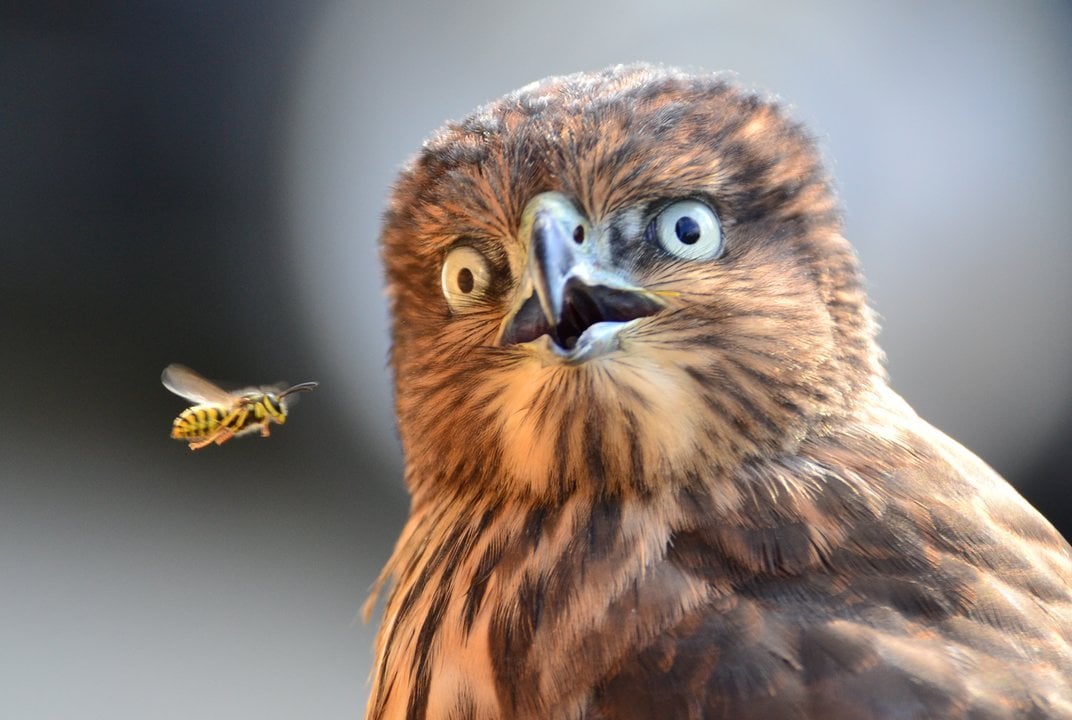Anomalocaris ("unlike other shrimp", or "abnormal shrimp") is an extinct genus of radiodont, an order of early-diverging stem-group arthropods. The first fossils of Anomalocaris were discovered in the Ogygopsis Shale of the Stephen Formation in British Columbia, Canada by Joseph Frederick Whiteaves, with more examples found by Charles Doolittle Walcott in the Burgess Shale unit of the Stephen Formation. Other closely related fossils have been found in the older Emu Bay Shale of Australia, as well as possibly elsewhere. Originally several fossilized parts discovered separately (the mouth, frontal appendages and trunk) were thought to be three separate creatures, a misapprehension corrected by Harry B. Whittington and Derek Briggs in a 1985 journal article. With a body length close to 40 centimetres, A. canadensis is thought to be one of the earliest examples of an apex predator, though others have been found in older Cambrian lagerstätten deposits.
Anomalocaris has been misidentified several times, in part due to its makeup of a mixture of mineralized and unmineralized body parts; the mouth and frontal appendage was considerably harder and more easily fossilized than the delicate body. Anomalocaris fossils were first collected in 1886 or 1888 by Richard G. McConnell of the Geological Survey of Canada. The specimens were described and named in 1892 by GSC paleontologist Joseph Frederick Whiteaves. The specimens are now known to represent isolated frontal appendages, but Whiteaves interpreted them as the abdomens of phyllocarid crustaceans. Noting its unusual anatomy for the abdomen of a crustacean, Whiteaves gave it the name Anomalocaris, meaning "unlike other shrimps". In 1928, Danish paleontologist Kai Henriksen proposed that Tuzoia, a Burgess Shale arthropod which was known only from the carapace, represented the missing front half of Anomalocaris. The artists Elie Cheverlange and Charles R. Knight followed this interpretation in their depictions of Anomalocaris.
The interpretation of Anomalocaris as an active predator is widely accepted throughout the history of research, as its raptorial frontal appendages and mid-gut glands strongly suggest a predatory lifestyle. In the case of A. canadensis, its outstanding size amongst Burgess Shale fauna also making it one of the first apex predators known to exist.
Anomalocaris canadensis lived in the Burgess Shale in relatively great numbers, though comparable fossils have been found elsewhere, suggesting a more expansive range over the Laurentian continent. In the Burgess Shale, Anomalocaris is more common in the older sections, notably the Mount Stephen trilobite beds. However, in the younger sections, such as the Phyllopod bed, Anomalocaris could reach much greater sizes; roughly twice the size of its older, trilobite bed relatives. These rare giant specimens have previously been referred to a separate species, Anomalocaris gigantea; however, the validity of this species has been called into question, and is currently synonymized to A. canadensis.
Anomalocaris: Earth's First Predator :hex-crab:
When Giant 'Shrimps' Ruled the Earth :hexcrab-party:
Megathreads and spaces to hang out:
- ❤️ Come listen to music and Watch movies with your fellow Hexbears nerd, in Cy.tube
- 💖 Come talk in the New weekly queer thread
- 🧡 Monthly Neurodiverse Megathread
- 💛 Read about a current topic in the news
- ⭐️ October Movie Nominations ⭐️
reminders:
- 💚 You nerds can join specific comms to see posts about all sorts of topics
- 💙 Hexbear’s algorithm prioritizes struggle sessions over upbears
- 💜 Sorting by new you nerd
- 🌈 If you ever want to make your own megathread, you can go here nerd
- 🐶 Join the unofficial Hexbear-adjacent Mastodon instance toots.matapacos.dog
Links To Resources (Aid and Theory):
Aid:
- 💙Comprehensive list of resources for those in need of an abortion -- reddit link
- 💙Resources for Palestine
Theory:
- ❤️Foundations of Leninism
- ❤️Anarchism and Other Essays
- ❤️Mega upload with theory for many tendencies
Remember nerds, no current struggle session discussion here to the general megathread, i will ban you from the comm and remove your comment, have a good day/night :meow-coffee:
hey guys
one day my consciousness will probably cease to exist and that's kind of fucked
:sadness:
Maybe it doesn't. Maybe the process of death and decay also encompasses our consciousness, and rather than simply poofing out of existence it transforms into a new thing like our body does.
Local Realism being proven false. We make two assumptions about the universe and we know at least one and possibly both of these assumptions are false.
We assume the universe is real. That reality has an objective reality independent of and external to our experience, and our experience is observing this existence.
We assume the universe is local, meaning basically we assume things can only interact with what is “near” to them. Now the important nuance here is that interactions are limited by the speed of light. Interacting with something faster than light is equivalent to going backwards in time so if the assumption of locality is not true then this means cause and effect in time no longer necessarily come in that order.
So two fundamental assumptions, that the universe has a state independent of us and when we look at it we measure that state, and that cause comes before effect in time (“locality” since this is another way of saying things can only interact with what is near to them, limited by the speed of light.)
One or both of these are not true. Very possibly both are not true. Which would mean reality is actually a fuzzy messball of superposition, that there is no actual firm state to reality.
I’m probably explaining it really poorly but if you look up “local realism” and “the bell test” you’ll find some interesting YouTube videos.
this is confusing as hell but thanks I will look into it
if i don't exist anymore it means i can't look at pictures of hamsters
New Megathread Nerds!!! :posting: :crab-party:
@aaaaaaadjsf @Abraxiel @Acute_Engles @AnarchaPrincess @Antilope @Alaskaball @Aliveelectricwire @BrookeBaybee @bbnh69420 @buh @cawsby @CDommunist @Cheesewizzard @Cherufe @ClathrateG @ClimateChangeAnxiety @clover @comi @Commander_Data @ComradeCmdrPiggy @ComradeEchidna @context @congressbaseballfan @corgiwithalaptop @crime @Cromalin @CyborgMarx @Dawn_Beveridge @DinosaurThussy @Diogenes_Barrel @Dirt_Owl @Dolores @Donut @drinkinglakewater @Eco @ElGosso @el_principito @EmmaGoldman @FidelCashflow @Flinch @flowernet @forcequit @Frogmanfromlake @GalaxyBrain @ghosts @Goadstool @GorbinOutOverHere @GoroAkechi @Grownbravy @GVAGUY3 @HarryLime @hexaflexagonbear @HoChiMaxh @Hohsia @Ideology @InevitableSwing @jabrd @JamesConeZone @Kanna @Kaputnik @Koa_lala @kristina @LeninWeave @LesbianLiberty @marxisthayaca
@MaxOS @MaybeNickCage @MelaniaTrump @Mindfury @Nakoichi @Ness @PM_ME_YOUR_FOUCAULTS @PorkrollPosadist @President_Obama @PurrLure @Ram_The_Manparts @Redcuban1959 @REallyN @RNAi
@Rojo27 @RoseColoredVoid @solaranus @SorosFootSoldier @Sickos @silent_water @Sphere @Spike @spring_rabbit @ssjmarx @take_five_seconds @TankieTanuki @Teekeeus @Tervell
@TheSpectreOfGay @ThisMachinePostsHog @ultraviolet @UlyssesT @Venustum @viva_la_juche @WhyEssEff @WIIHAPPYFEW @wtypstanaccount04 @Yanqui_UXO @Zoift@thelastaxolotl @WhoaSlowDownMaurice @Quimby @Lydia
@CARCOSA @liberal @ella @all_that_is_solid @KenBonesWildRide @KiraNerys @TomboyShulk @DuckNuckem @SapGreen @Zangief @scumlord @COMMENT @Antisocial_Socialist @DOPESMOKERDENG
Remember nerds, no current struggle session discussion here on the general megathread, i will ban you from the comm and remove your comment, have a good day/night :meow-coffee:
crazy how they never interview non-detransitioners and try to imply that being cis is a fad
I'm impressed that they can find 1% of a population that is like, what, 1%? .5%? of the population?
I just passed my oral comprehensive exams and am officially a PhD candidate.
i like how both me and the bf think we're out of each others leagues
low self confidence hours whats up
he is really so incredibly attractive and im just the piss gremlin covered in blankets he keeps fed
i have no idea what he sees in me
i already know what he sees in me and i think he is insane
he just like big booba big butt
and im like ????
Well you also got a big personality so sounds like he hit the trifecta there.
Top of reddit is a video of elon getting booed off the stage at a Chappelle show.
He banned the Tweeter that posted it.
Free speech absolutist
elon getting booed off the stage at a Chappelle show.
based x100 https://twitter.com/duty2warn/status/1602319496076722178
doesn't look that bad, unfortunately. I was hoping he had to be escorted to safety with bodyguards.
Lots of people: It is bad that gaming companies use behavioral science to induce addictive behaviors in gamers in order to manipulate them in to spending money.
Lots of other people (assholes): You pathetic villein! You miscreant! You detestable crustacean! How dare you even imply that a man is not the master of the impregnable fortress which is his mind! To even suggest that one might be influenced by such base roguery is beyond the pale! Any creature who succumbs to such pathetic coercion is unworthy of consideration! A mockable entity of no substance! I, of course, embodying the Nietzschean ideal, exist as a pure soul unencumbered by the grossly physical body, untrammeled by the material, unmoved by the suggestions and enticements of the multi-billion dollar gaming industry and it's legion of highly trained psychologists! Such forces could never alter my decision making by one iota! I am as god, divine, unmoved but all moving, and as such mere trifles such as loot boxes and fomo could never influence me! Begone from my sight, groveling worm! Go abase yourself among the unwashed masses who dance thither and yon to the pedestrian piping of RNG and time gated progression systems! I am beyond such things, and I must also sit down to write an eleven page essay on how I am very mad that I am not getting the treats I deserve from the progression system of the game I spent 80 hours playing this week!
I'm sure he's waiting patiently for you to come home :thurston:
Twitter links are banned :sicko-yes:
Screencaps and alternate links are still okay :sicko-no:
Continuing my crusade to get twitter reposts of any kind banned from this websitewhy would he say 'not the bees' tho. it's be like 'yes please! more bees' or something
Is that what the whole "minecraft bee is trans" thing was about?
Using an EpiPen to not die of bee stings in the quest to be a hot chick
BREAKING: HRBEES ESCAPE LAB. THRONGS OF PINK, WHITE, AND BLUE-CLAD GEN-ZERS GO ON PILGRIMAGE TO SUSPECTED HIVE SITES.
Im a fucking egg
fuck
shit
how didn't I know
fuck fuck
you'll do well on your finals and :trans-hatch: into your full potential. :inshallah-script:
It's gonna be okay.
Just breathe. You don't gotta figure everything out all at once.
I know, but come on its finals week, could I have found my gender identity after the insanity
Listen, even if you're planning on hrt it's gonna be a few months before you can start. Socially transitioning would take at least a few weeks, probably. You can go into your finals knowing who you are and what you're going to do after them. Instead of being a thing to worry about, it's an opportunity to sketch out a rough plan in a notebook and keep it on the backburner until finals are done.
bruh I'm not starting until I am gone from this place
or at least know I wont be hated by everyone around me
Extremely normal decision to ban the website which made up the single largest share of links on your website without any consultation of your userbase.
Check out this list for more Nitter instances: https://github.com/xnaas/nitter-instances
I picked a random instance and it loads fine: https://nitter.marcopisco.com/chapo_chat
This is still strictly less convenient and makes posting more fraught with potential violations and less accessible for no real reason.
I think we should ban youtube links as well :shrug-outta-hecks: fuck those spinny ad wheels and cookies consent form on half the page
Shoutout to Indian women getting their outfits ready to wear at wedding.
If a wedding is 4 days long you have to wear 4 different outfits
It's complex stuff. Each outfit has a lot of individual parts and jewelry. Men also have different outfits but the outfits are real simple




















